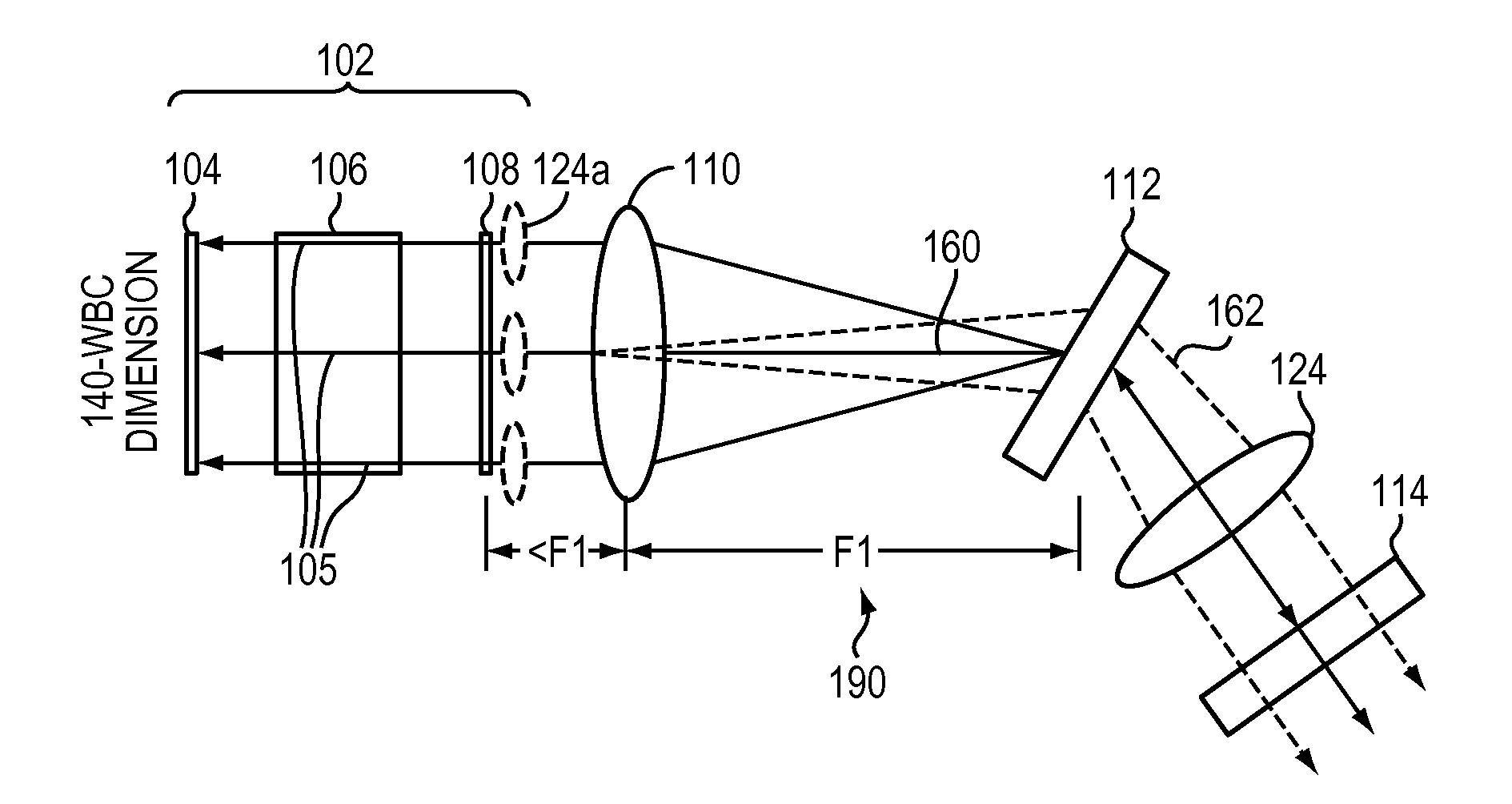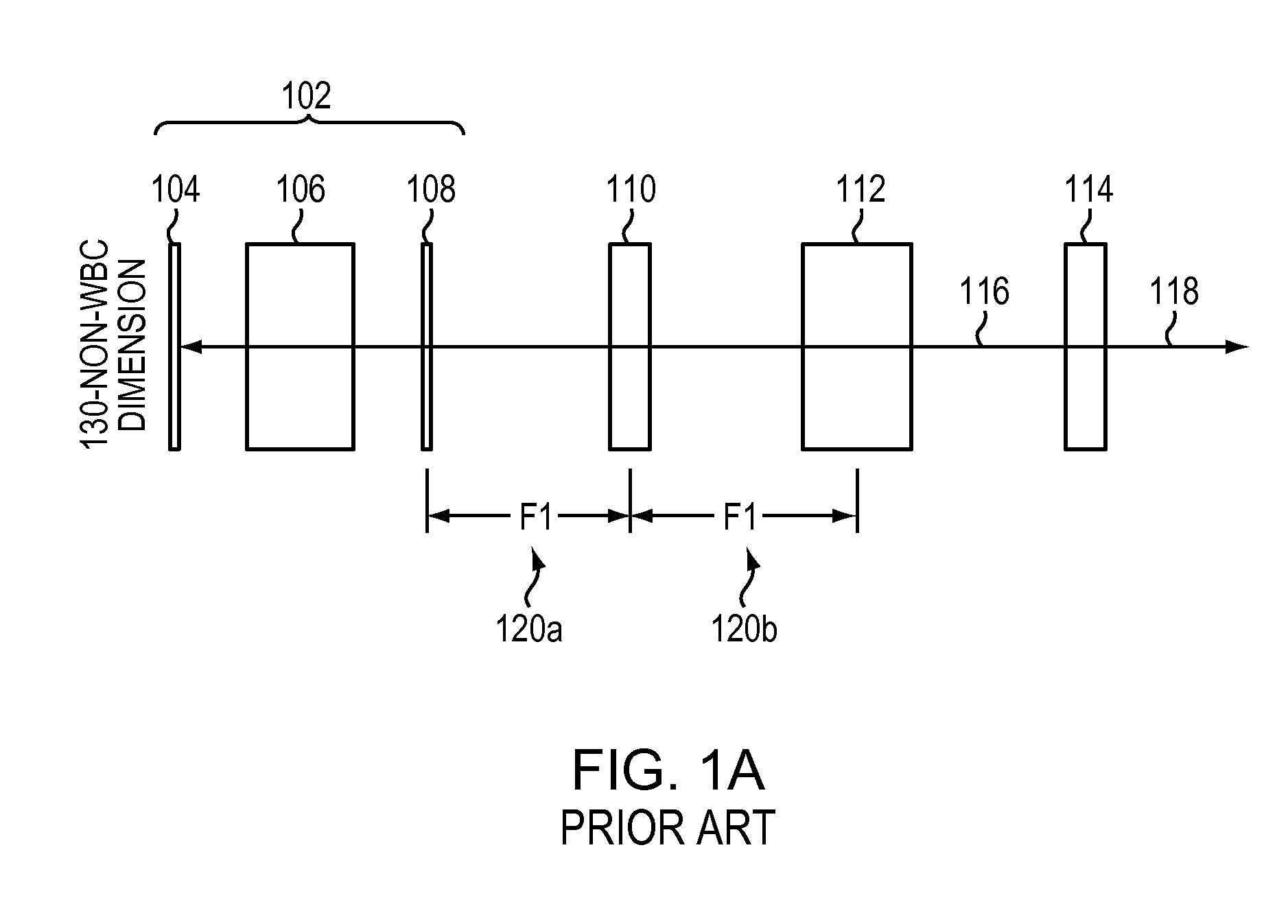Wavelength beam combining laser systems with micro-optics
a laser system and laser technology, applied in lasers, semiconductor lasers, instruments, etc., can solve the problems of difficult to achieve the desired beam quality factor of the final combined beam and/or maintain a relatively small overall footprint of the laser system, and achieve high brightness and high power
- Summary
- Abstract
- Description
- Claims
- Application Information
AI Technical Summary
Benefits of technology
Problems solved by technology
Method used
Image
Examples
Embodiment Construction
[0034]FIGS. 1A and 1B illustrate a conventional external-cavity one-dimensional wavelength beam combining (WBC) laser system along a non-beam-combining dimension 130 (FIG. 1A) and along a beam-combining dimension 140 (FIG. 1B). As shown, such systems may include a one-dimensional diode bar 102 having a back reflective surface 104, a gain medium 106 with two or more diode emitters 105, a front reflective surface 108, a combining optic (or “focusing lens”) 110, a dispersive element 112, and a partially reflecting output coupler 114. The combining optic 110 is typically placed an optical distance 120a away from the front reflective surface 108 of the diode bar 102, while the dispersive element 112 is placed an optical distance 120b away from combining optic 110, where both optical distances 120a, 120b are substantially equal to the focal length of the combining optic 110. The output coupler 114 is spaced away from the dispersive element 112 and reflects a portion 116 of the generated b...
PUM
| Property | Measurement | Unit |
|---|---|---|
| length | aaaaa | aaaaa |
| length | aaaaa | aaaaa |
| wavelengths | aaaaa | aaaaa |
Abstract
Description
Claims
Application Information
 Login to View More
Login to View More - R&D
- Intellectual Property
- Life Sciences
- Materials
- Tech Scout
- Unparalleled Data Quality
- Higher Quality Content
- 60% Fewer Hallucinations
Browse by: Latest US Patents, China's latest patents, Technical Efficacy Thesaurus, Application Domain, Technology Topic, Popular Technical Reports.
© 2025 PatSnap. All rights reserved.Legal|Privacy policy|Modern Slavery Act Transparency Statement|Sitemap|About US| Contact US: help@patsnap.com



